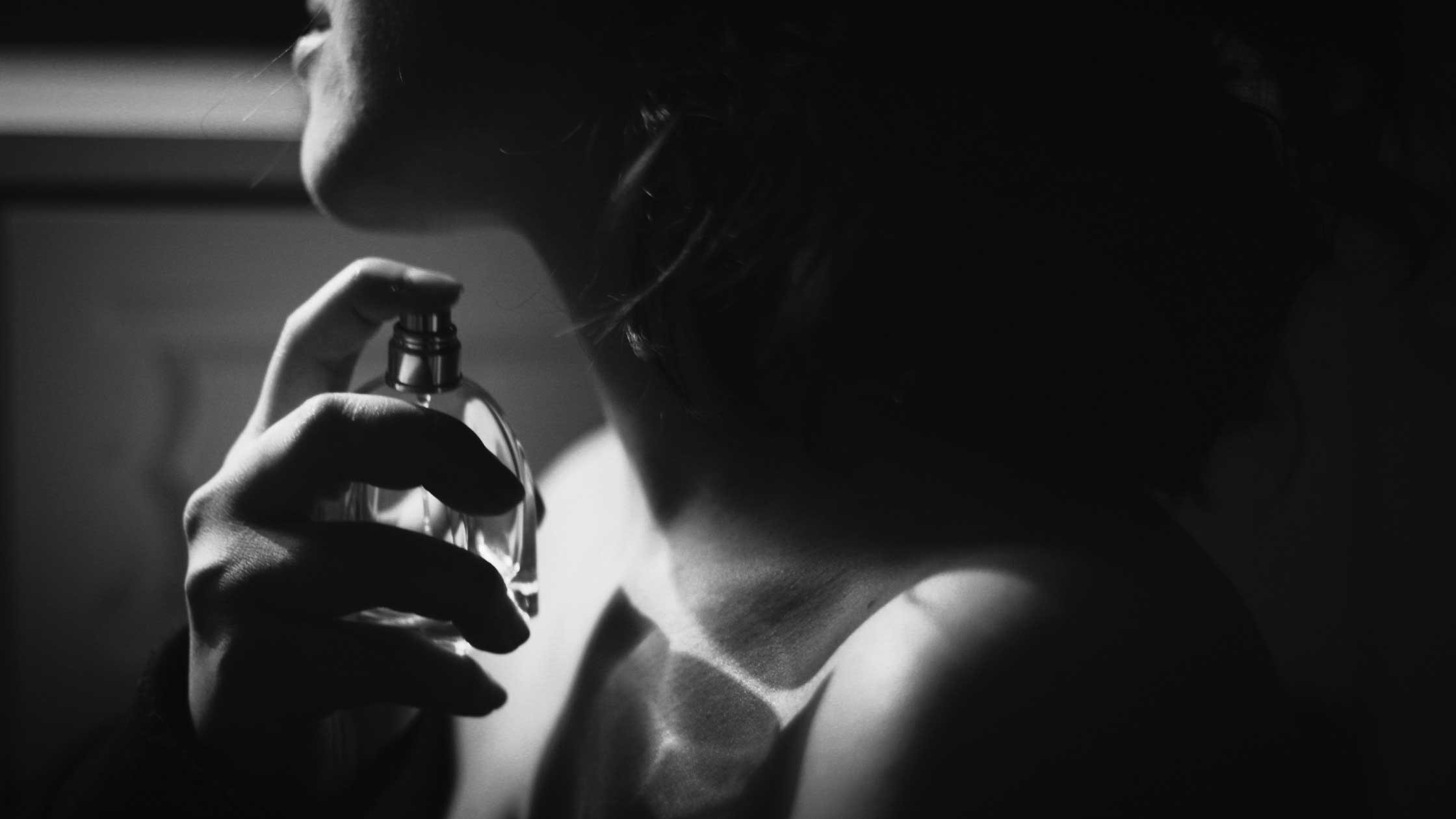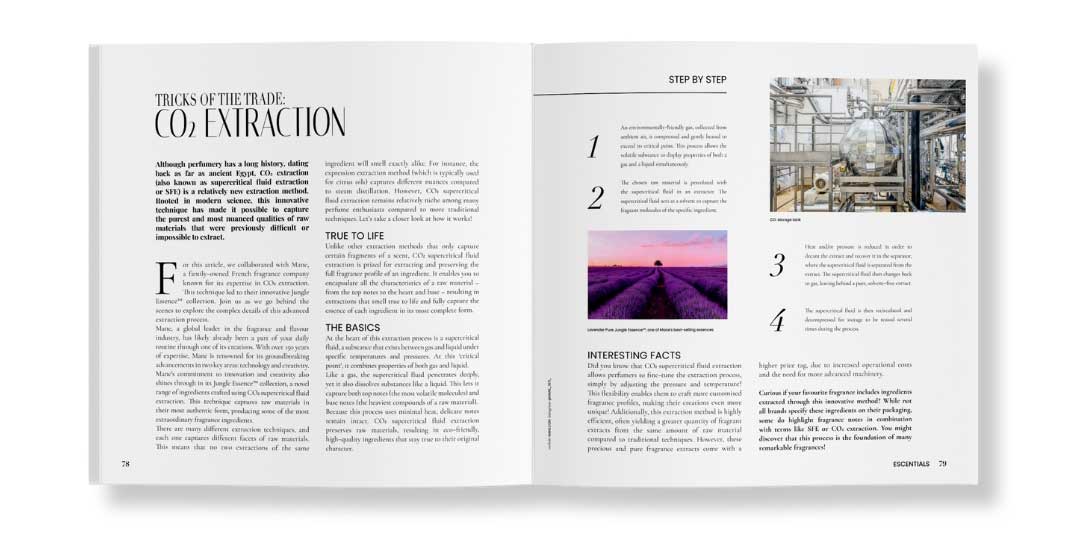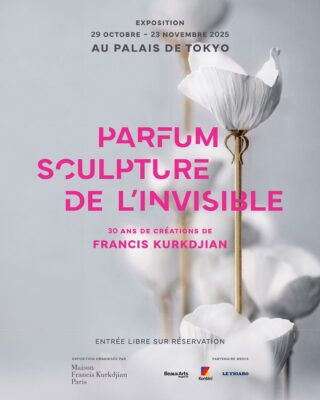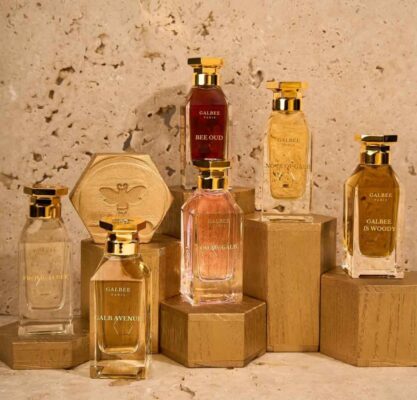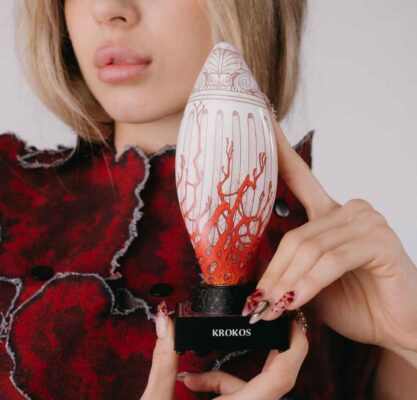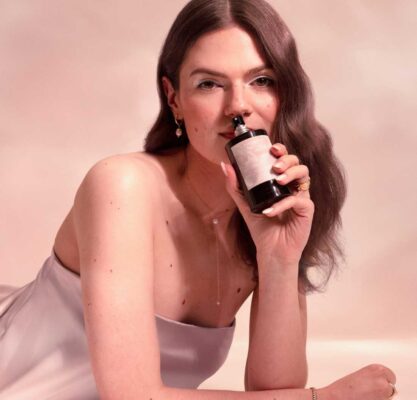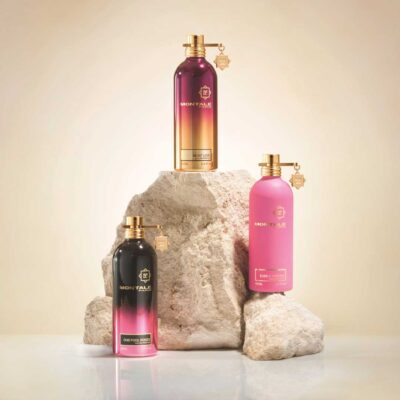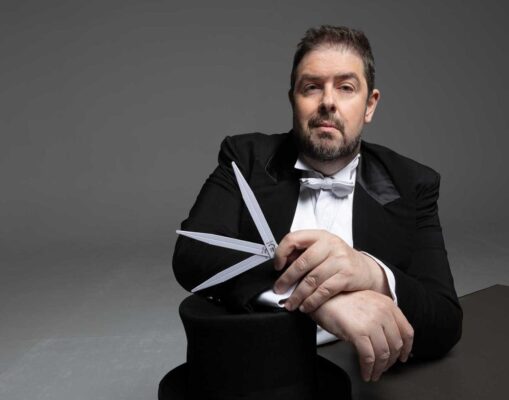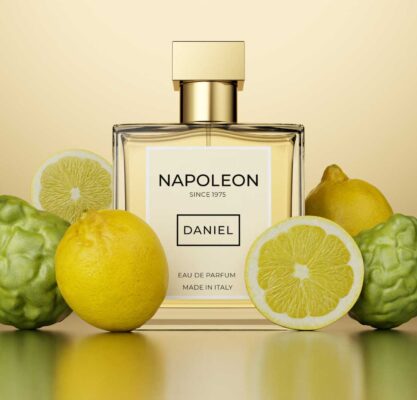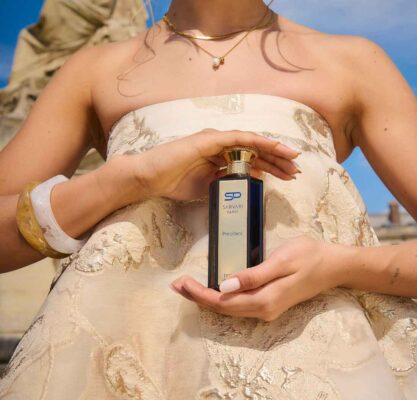PERFUME 101:
YOUR BEGINNER’S GUIDE TO PERFUME CONCENTRATIONS
Do you recall wearing your favourite fragrance, but is it untraceable after a few hours? That has something to do with the perfume concentration. We usually call a fragrance a perfume, but that’s not always the right term. In the world of perfumery, the concentration of the perfume determines whether it is an eau de toilette, eau de parfum, or extrait de parfum. The difference in performance? Its longevity – the time the perfume lingers on your skin.
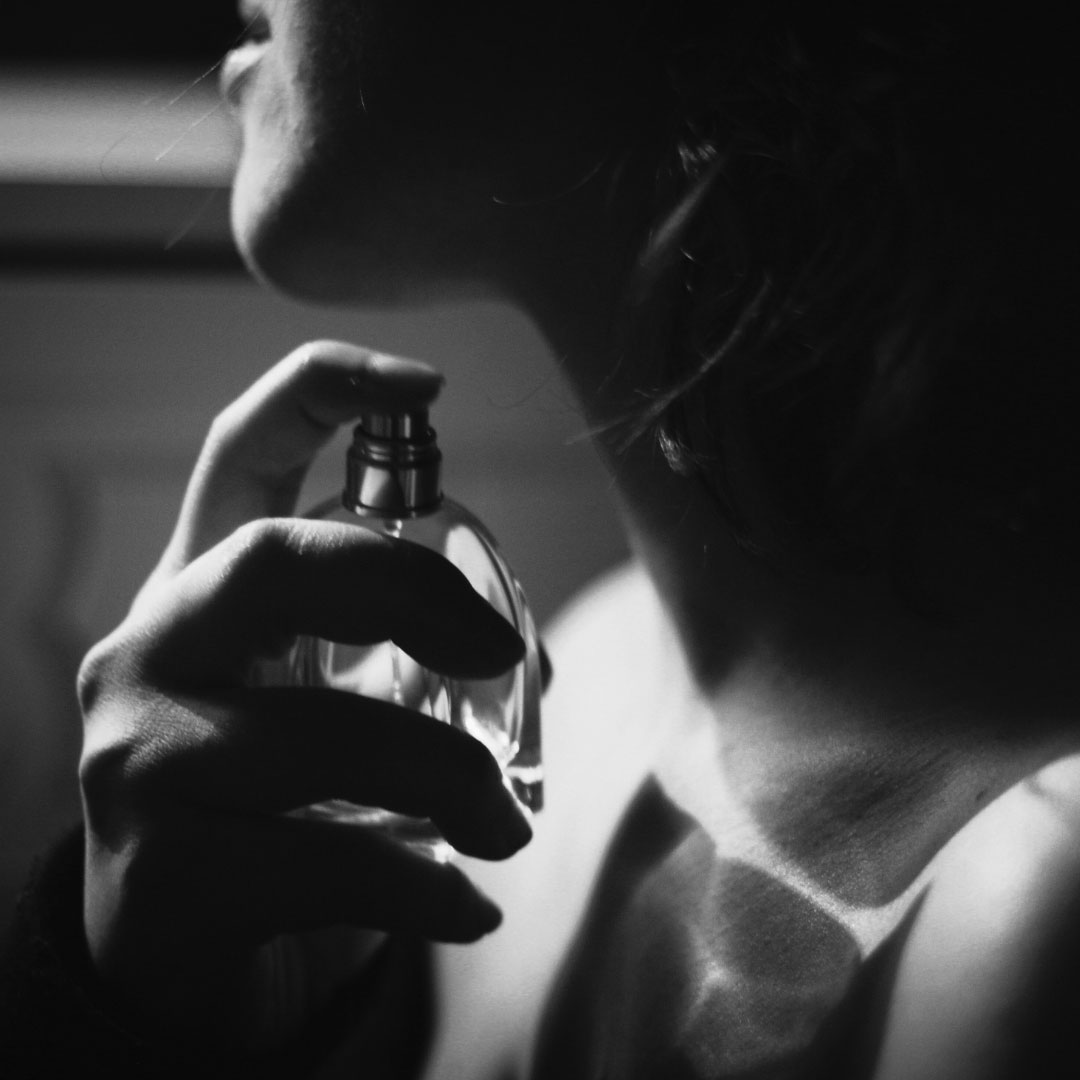
ELEMENTS OF PERFUME
Perfume consists of two elements: the perfume oil and a solvent. A master perfumer (called a ‘nose’) creates a perfume composition by sometimes mixing more than a 100 different scented ingredients. This is called the perfume oil or the perfume concentration. It is an oily and often quite viscous mixture. In order to set the correct strength and ensure it’s safe to apply to the skin, the perfume oil is mixed with a solvent. This solvent is usually alcohol (also known as ethanol or ethyl alcohol; on the packaging it states alcohol denat.), often mixed with a small amount of water (aqua). Upon contact with the skin, the alcohol evaporates quickly and only the fragrant substance remains. The goal is to make the perfume last longer on your skin.
The time a perfume lingers on the skin is called the longevity of a perfume. When a perfume stays on the skin for more than 8 hours, it has a high longevity. When it disappears within 4 hours, the longevity is considered low.
PERFUME CONCENTRATION
What distinguishes an extrait de parfum from, for example, an eau de toilette, is mainly the degree of dilution of the perfume oil concentrate in the solvent. The highest concentration of perfume oil can be found in an extrait de parfum, with a concentration of up to 40 per cent. A higher concentration of perfume oil gives the perfume more power and makes it linger on the skin for a long time, usually for more than 8 hours (high longevity). Given the high concentration of perfume oil and alcohol, you only have to use a very small amount of extrait de parfum to obtain an optimal perfume experience. An eau fraiche, however, only stays on the skin for one to two hours due to its low percentage of perfume concentration. Generally, this means that you have to apply more perfume to experience the perfume better and for a longer period of time.
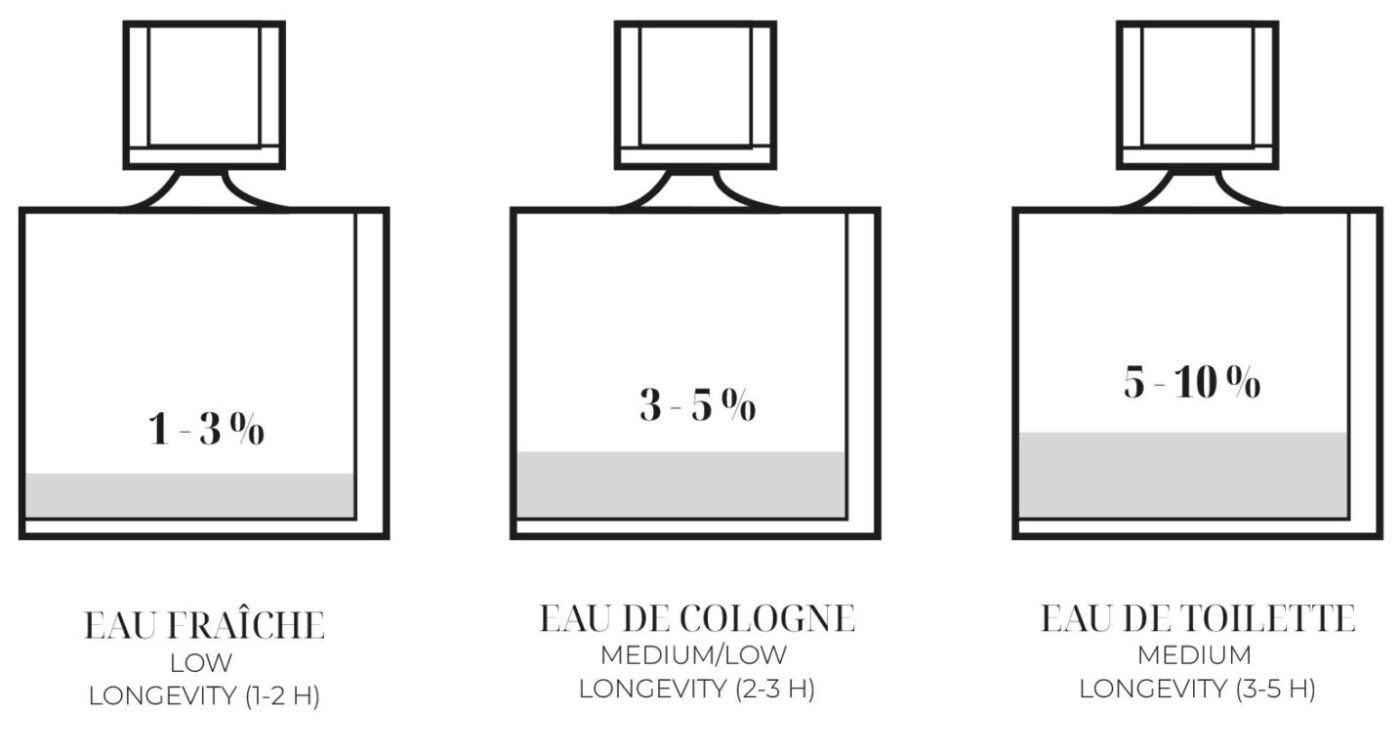
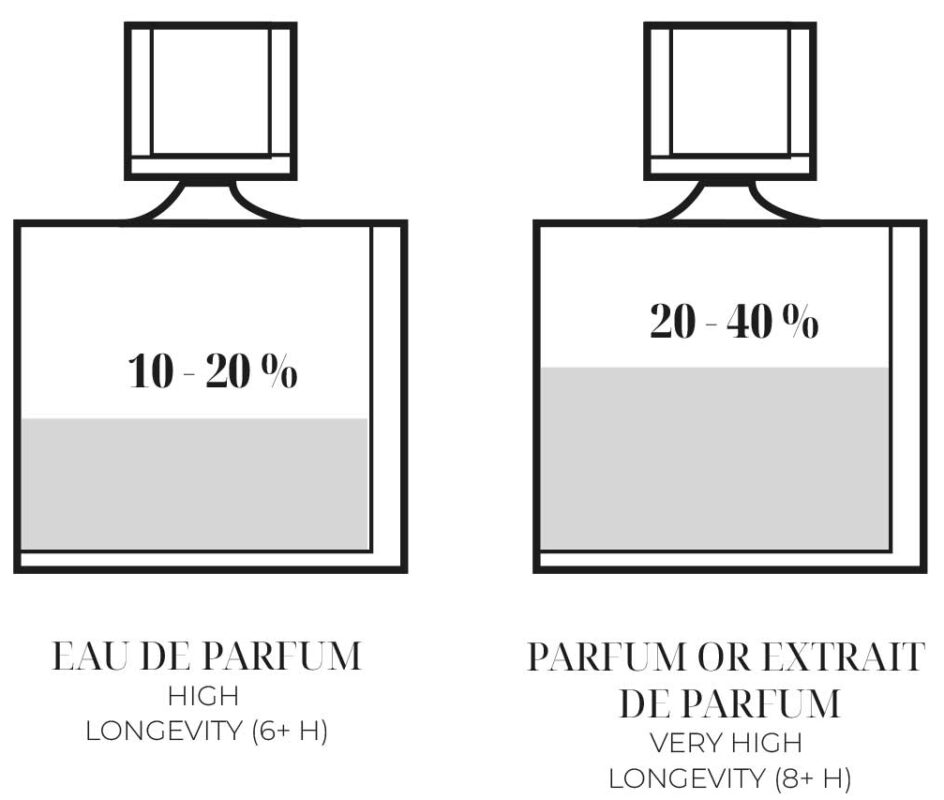
PERFUME CONCENTRATION IN NICHE PERFUMES
One of the main differences between designer and niche perfumes is the concentration of perfume oil. Most niche perfume brands do not launch perfumes with a concentration below 10 per cent and focus their core business on eau de parfum and extrait de parfum formulas. Due to the higher ratio of the precious perfume oil, niche perfumes often have a stronger scent and a higher longevity. The perfume oil is the most expensive part of the perfume liquid, and since niche perfumes contain more of it, they are therefore more expensive.
It should be noted that solely focusing on perfume concentration does not necessarily say much when assessing the quality of a perfume. There are many other factors that contribute to the quality of a perfume, such as the sillage, projection, structure of the olfactory pyramid, usage of precious (natural) ingredients, quality of the alcohol, perfume journey, complexity of the composition, and so on. Getting dizzy already? Don’t worry – these topics will also be covered by Le Parfum soon, making you a perfume connoisseur in no time!

